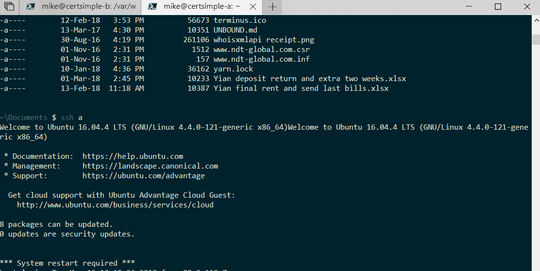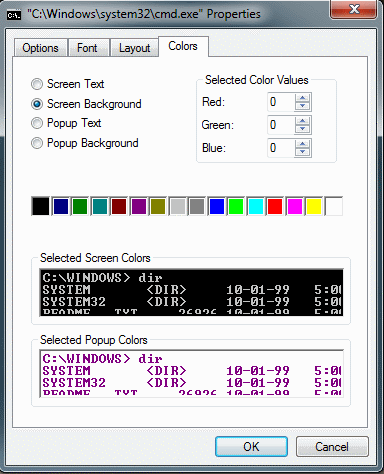17
3
Few years ago, I changed color scheme of command prompt. Now, I have forgotten how exactly I did this.
- It's permanent. So,
COLORcommand is out of question. - It's intact no matter from where I launch cmd. So, changing color from shortcut properties is out of question because I get the color scheme even when I launch cmd from Run or from original location.
- It doesn't let me override it by shortcut properties. And, this is the problem. I create a cmd shortcut and change its color scheme from properties. But, this isn't reflected even after reboot.
So, the only option I have left: Use the same method I used few years ago. How did I change cmd color?



To access these settings, press [windows key]+[r], then key regedit.exe, then click OK to open the Registry Editor application. – David Alan Condit – 2018-09-18T14:19:28.017
Something very interesting happening. Your solution worked but for a brief moment the screen colour is purple. And after that millisecond it is white and black text. Why is it initially purple background ? Although I changed it in regedit. @Indrek – Pie – 2019-11-27T14:43:52.003
It is changing to white background and black text because I changed that value in regedit. But why is it purple background for a brief moment initially. – Pie – 2019-11-28T06:10:05.003
Of course, you’ll have to restart the console after making the change for it to take effect. – Synetech – 2012-06-28T05:14:02.910